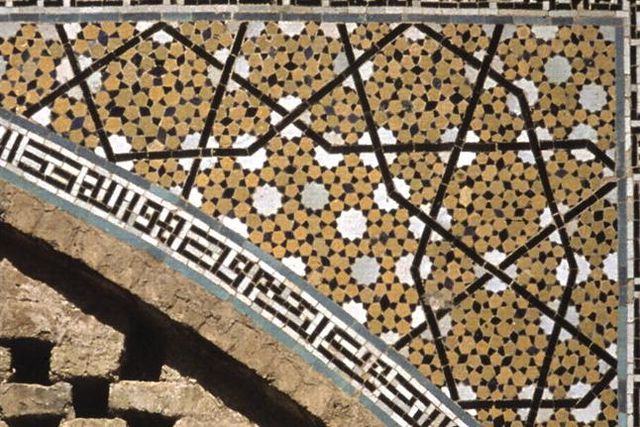Computer art is art in which computers play a role in the production or display of the artwork. Such art can be an image, sound, animation, video, CD-ROM, DVD-ROM, video game, website, algorithm, performance or gallery installation. Many traditional disciplines are now integrating digital technologies and, as a result, the lines between traditional works of art and new media works created using computers has been blurred. For instance, an artist may combine traditional painting with algorithm art and other digital techniques. As a result, defining computer art by its end product can thus be difficult. Computer art is bound to change over time since changes in technology and software directly affect what is possible.
Desmond Paul Henry, picture by Drawing Machine 1, c. 1962
A computer-generated fractal landscape
A robotic brush head painting on a canvas
A photo of Jimmy Wales rendered in the style of The Scream using neural style transfer
Algorithmic art or algorithm art is art, mostly visual art, in which the design is generated by an algorithm. Algorithmic artists are sometimes called algorists.
"Octopod" by Mikael Hvidtfeldt Christensen. An example of algorithmic art produced with the software Structure Synth.
Islamic geometric patterns such as this girih tiling in the Darb-e Imam shrine in Isfahan, are precursors of algorithmic art.
Paolo Uccello made innovative use of a geometric algorithm, incorporating linear perspective in paintings such as The Battle of San Romano (c. 1435–1460): broken lances run along perspective lines.
Letter Field by Judson Rosebush, 1978. Calcomp plotter computer output with liquid inks on rag paper, 15.25 x 21 inches. This image was created using an early version of what became Digital Effects' Vision software, in APL and Fortran on an IBM 370/158. A database of the Souvenir font; random number generation, a statistical basis to determine letter size, color, and position; and a hidden line algorithm combine to produce this scan line raster image, output to a plotter.








